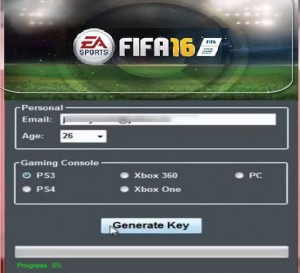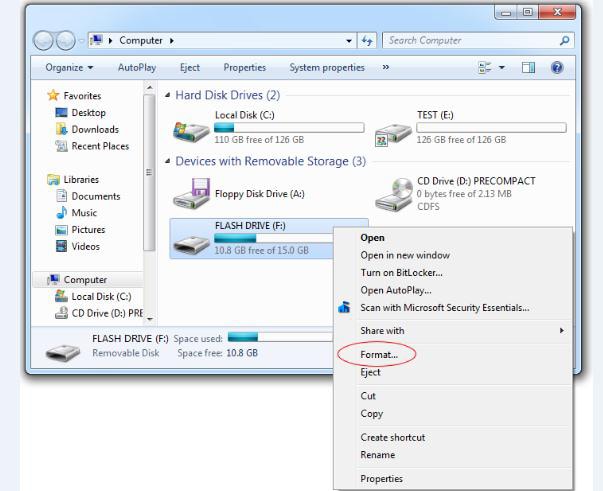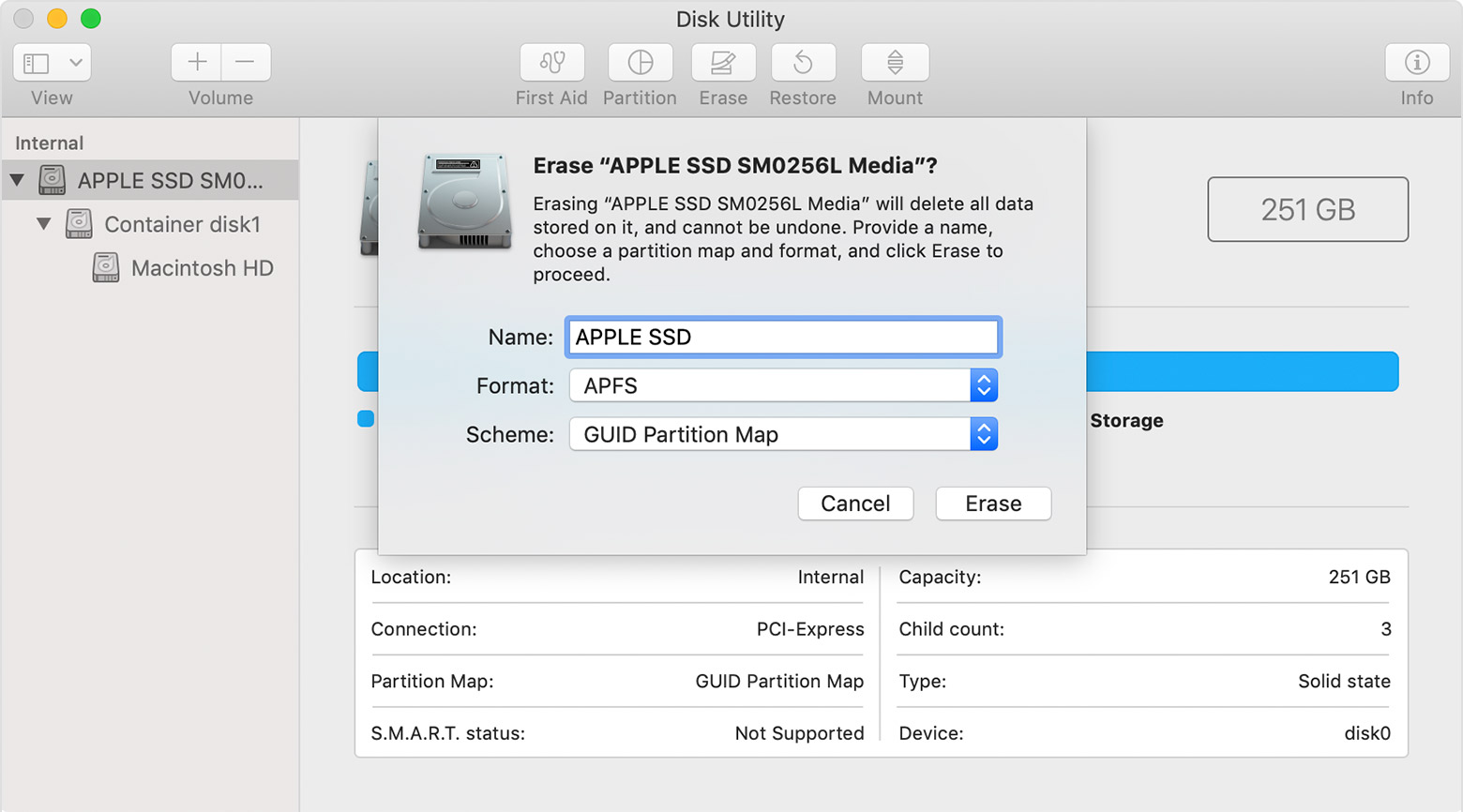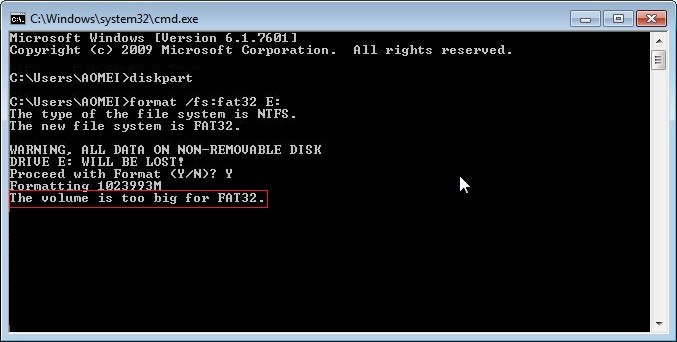Reformat Thumb Drive Mac
- Reformat A Thumb Drive Mac
- Macdrive Alternative
- Format Thumb Drive Mac Command Line
- Reformat A Thumb Drive Mac
Yo just got a new external hard drive and want to use it on your Mac. However, the Mac OS does not allow you to write data to the drive. You may wonder how to reformat an external hard drive on Mac. Transfer music from ipod to computer free software mac computer. Follow the tutorial below, you'll get everything covered.
Bonus: How to Recover Data from Formatted External Hard Drive on Mac
Reformatting an external hard drive for use with Mac OSX is not as difficult as it might seem. In a few simple steps you are ready to go and can save your back-up files to the external drive, keeping your information safe and giving you peace of mind. Keep in mind that a MAC can generally read other file formats, but for the best performance and to create a bootable disk, formatting exclusively for MAC is required.
Part 1: Which File Format You Should Choose?
Before you begin formatting the drive, there are a few things to do. The most important, you should decide which format to use.
- Now, as you can see, formatting your flash drive on your Mac is a very easy thing to do. All you need to have is the knowledge on how you can do. And keep in mind that if you are going to format your flash drive, make sure that you choose the right format so that you can use it in any PC.
- To erase and format any drive connected to a Mac computer running OS X Yosemite, use Disk Utility. Simply erasing a USB drive in Disk Utility will automatically format it too. Because there are different types of formats for different purposes, it's good to know the differences before accepting the default settings.
- How to Reformat a Jump Drive on a Mac. A jump drive, or USB flash drive, offers convenient portability to your data. Many of these drives offer a key-ring attachment hole, so you will never be without your data. For school or work projects, this portability means you can work from home, work or lab computers while.
To format your USB drive on Mac, enter the following command: sudo diskutil eraseDisk FORMAT VOLUME-NAME USB-LOCATION-AND-NAME Where: FORMAT is where you choose which format you want to use when erasing and formatting your pen drive. There are many file types available when you format a USB drive on Mac, such as exFAT, FAT32, JHFS+, etc. There are several applications available online for formatting USB drives such as 321Soft USB Flash Recovery for Mac,Data Recovery for Mac, and Disk Drill. These third party tools allow to format flash drive on your mac. But if want to format a flash drive without using third party tools then.
There are a few file formats you can use, but it depends on the purpose you want to use the drive for. Which one is right for your circumstance? We'll describe them here, you'll know your choice after reading the details.
Asee camera software for mac free. APFS: This is the default file system in Macs with High Sierra. It is efficient and reliable. However, it won't be readable and usable on machines that are not running Mac High Sierra, and Windows or Linux PCs. What's more, it is compatible with SSD and flash storage devices only.
Mac OS Extended (Journaled/HFS+): If you didn't update your Mac OS to High Sierra, the default file system on your Mac shoule be Mac OS Extended. Mac OS Extended (encrypted) would be an ideal option if you probably carry your laptop or external drive here and there. You can encrypt it so that no one can access the contents on your drive.
MS-DOS FAT (aka FAT32): In addition to Mac, it can also be written and read by Linux and Windows. It enables you to regularly share files with your friends who own a PC. Nevertheless, this older file system is limited to no more than 4GB and there might be security issue and disk errors.
Reformat A Thumb Drive Mac
ExFAT: It is similar to ExFAT which can be read by both Windows and Mac, but it can store more than 4GB files.
NTFS: As the default file system in Windows, it can only read by Mac OS, writing to it is not available. Luckily, there are third-party tools to help you do so.
Part 2: Format External Hard Drive for Mac with Disk Utility
Formatting an external hard drive would erase everything on it. Hence, you must backup your important files before reformatting the drive if you want to save them. The easiest way is to drag it from one drive to another.
All is set, then you can go ahead to format the drive on your Mac. Disk utility - the MacOS utility application can help you with this. Just follow these steps below:
Step 1. Connect the external drive or the USB drive to the MAC.
Step 2. Start the Disk Utility, located under Applications > Utilities.
 FxSound Enhancer Premium 13.018 Crack + Key.FIFA 14 CRACK V5 FINAL 3DM - YouTubeFIFA 14 CRACK V5 FINAL 3DM hamidibra. Crack V5 para Fifa 14 Corrigindo todos os erros e bugs.Fifa 14 CRACK (3DM).rar - Google DriveFifa 14 CRACK (3DM).rar - Google Drive.Game Fix / Crack: FIFA 13 v1.7 All No-DVD Reloaded NoDVD.
FxSound Enhancer Premium 13.018 Crack + Key.FIFA 14 CRACK V5 FINAL 3DM - YouTubeFIFA 14 CRACK V5 FINAL 3DM hamidibra. Crack V5 para Fifa 14 Corrigindo todos os erros e bugs.Fifa 14 CRACK (3DM).rar - Google DriveFifa 14 CRACK (3DM).rar - Google Drive.Game Fix / Crack: FIFA 13 v1.7 All No-DVD Reloaded NoDVD.
Step 3. Find the name of the drive in the left side of the Utilities window and select it. And click Erase button.

Step 4. Follow on-screen prompts to choose Mac OS Extended (Journaled) file system and allow the disk to format.
Bonus: How to Recover Data from Formatted External Hard Drive on Mac
In case you forgot to backup files before formatting the external drive. Here comes the cure - iMyFone AnyRecover - a one-stop solution to recover deleted, lost or formatted files from Mac.
Follow these simple steps using AnyRecover to get your files back!
Get Ready!
First, download and install AnyRecover, following on-screen prompts to accomplish the task.
AnyRecover 20% off Coupon Code: ANY-ART-D20
Macdrive Alternative
Don't miss the opportunity to get AnyRecover license at the lowest price on the market. Don't know how to apply it, check the instructions here:

Get Set!
1. After loading AnyRecover, plug your external hard drive into your Mac directly or via USB.
2. Next select the drive under 'External Removable Devices' tab, click 'Start' to begin scanning lost files on the drive.
Go!
1. AnyRecover takes a moment to scan your drive. Once done, it will list out all scanning results by file type.
2. Double click a single file to preview it before recovery.
3. Select the files and press Recover to get them back.

What If?
What if my files were not found? Fear not. We can take this a step further. Enable 'Deep Scan' to try one more time, follow the steps above just as before to locate and recover your files.
Format Thumb Drive Mac Command Line

Reformat A Thumb Drive Mac
It is plain to see that AnyRecover for Mac is a tool worthy of top shelf treatment in your arsenal of items that are used to defend, recover and keep your system up and running. Don't get caught without the file you need for that meeting or stumbling looking for baby photos that were stored on disk and suddenly 'hid' from your view. Allow AnyRecover to find and recover your lost files. AnyRecover is easy to use but provides sophisticated results that mean you know what you're doing!
